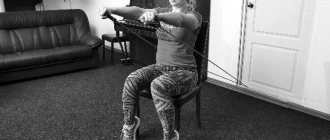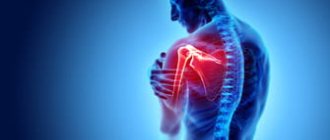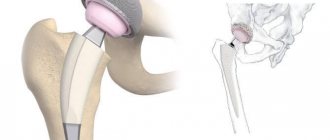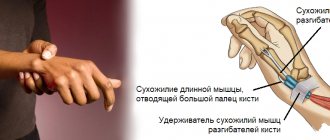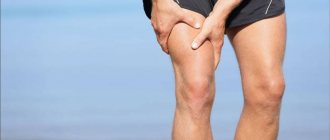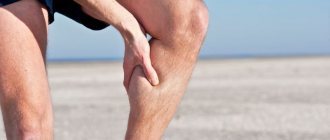At first glance, trauma to any area of the human body does not seem to be as serious a condition as soft tissue wounds, bone fractures or dislocations. However, it is shoulder bruises that, if treated incorrectly, often lead to various complications and, as a consequence, to an increase in the duration of therapy and rehabilitation of a person.
In traumatology, it is customary to divide the shoulder injury into a bruise of the shoulder joint (due to direct impact on it, for example, when falling on an outstretched arm) and a bruise of the shoulder area (in this case, only soft tissues are injured, functions are not impaired). Although the main measures for treating such damage will be similar, however, understanding the mechanism of development of the pathological process and the mechanism of injury allows the doctor to avoid complications associated with dysfunction of the shoulder joint.
Classification of injuries
Bruises of the shoulder girdle are common in orthopedics, but without an accurate determination of the type of injury, it is impossible to offer effective therapy. The classification is formed taking into account the clinical picture (symptoms), causes of the problem and diagnostic results. Thus, there are various options, including damage to soft tissues, rotator cuff, and sprained ligaments. Only an experienced orthopedic surgeon can accurately determine the diagnosis.
Soft tissue bruise
With soft tissue bruises, the function of the shoulder is usually not impaired. This is a closed form of injury, the severity of which depends on the characteristics of the traumatic agent (type, speed of movement, weight and other parameters) and the size of the affected area. Bruising of the soft tissues of the shoulder can be accompanied by damage to the subcutaneous fat, dermis and epidermis, as well as small vessels, muscles, and ligaments.
Damage without disruption of structures is diagnosed in the majority of all cases. But it is a mistake to believe that this problem does not require medical supervision. In case of a bruise without fractures or dislocations, minor injuries to the peripheral nervous structures are determined, which is why numbness and a slight tingling feeling are often disturbing.
Shoulder injury from a fall
People often get shoulder injuries at home. Injuries in everyday life can be caused by falling on your hand. The main reason for the problem is a jerky movement, a sharp impact on the tissue. At risk are athletes, lovers of entertainment at ski resorts, dancers, children, and people with pathologies of the musculoskeletal system. But no one is immune from injury, so it is important for everyone to seek medical help without exception. And if, for example, a woman hurt her shoulder when falling on the steps, a man experiences painful discomfort after a fight, he needs to make an appointment with a doctor right away.
Rotator cuff injury
When diagnosing a severe shoulder contusion, an orthopedic surgeon will always consider the possibility of damage to the rotator cuff. This is a functional group consisting of four muscles and tendons that help the upper limb to fully rise and rotate with stabilization of the joint. With such injuries, acute pain, loss of mobility and strength appear.
Shoulder sprain
Overstretching, partial rupture of ligaments without accompanying severe injuries is a closed-type injury that requires immediate response. Make an appointment to muffle symptoms, eliminate complications, apply effective therapy, and achieve a speedy recovery.
Symptoms of a shoulder injury
The main circumstance that will allow one to suspect it is the presence of a previous injury. In other cases, all the symptoms that are characteristic of a shoulder bruise, but were not accompanied by damage, may indicate a disease of the joint or its surrounding structures. The main symptoms are:
- Pain in this area at rest, which intensifies with palpation, physical activity, and also when attempting to move the joint.
- Change in color of soft tissues, formation of skin and subcutaneous hematoma (impregnation and accumulation of blood in the skin and subcutaneous tissue).
- Swelling of the skin and affected area
- Decreased function of the shoulder joint, but with preservation of full range of motion. If the range of motion is impaired (the patient’s inability, for example, to raise his arm above his head), it is highly likely that we will be talking about a dislocation.
Diagnosis of bruises of the shoulder joint
The main task of the doctor when examining a patient is to exclude more severe pathology:
- humerus fracture;
- rupture of the acromioclavicular joint;
- dislocation.
This is due to the fact that for more severe injuries, special treatment measures are necessary. To exclude them, if a shoulder injury is suspected from a fall, an x-ray of the injured area is performed in at least two projections. This allows you to quickly and accurately answer the question - is it simply soft tissue damage or another, more severe case.
To exclude severe injuries, which were written above, an x-ray of the shoulder joint and humerus is performed.
If there is a suspicion of fluid accumulation in the shoulder joint, a diagnostic puncture may be performed to determine the type of fluid. It also allows you to reduce intra-articular pressure, thereby easing the patient’s condition.
If there is any doubt about the diagnosis, an MRI study is indicated, which will show the pathology of not only bone tissue but also soft tissue structures, such as tendons, ligaments, muscles, and even the thickness of joint cartilage.
What is a dislocation
This is the name given to the largest connection between the arm and the body. In humans, the shoulder joint is one of the parts responsible for precise movements, so it is as mobile as possible. During evolution, he became voluminous and gained strong muscles.
The joint is located in the upper part of the arm. Consists of the head of the humerus and the socket of the scapula. Joint characteristics:
- By structure. It is considered simple because it is formed from only two bones located in one capsule without septa or cartilaginous discs.
- According to the form. Ball-shaped type of joint.
- By the number of anatomical axes. A multi-axis joint that helps move a limb in any direction.
httpv://www.youtube.com/watch?v=embed/vbsQa3tJ06s
In a child in the womb, the bones that will form a joint in the future are still separated. At the time of birth, the head of the humerus is almost formed, the glenoid cavity is immature. During the year the joints are strengthened.
One of the most complex types of shoulder injury is a shoulder dislocation. The causes and treatment are determined by the doctor after a careful examination of the victim. Further therapy consists of restoring the functioning of the joint and preventing complications.
The most common causes of shoulder dislocation are injuries during physical activity and a fall on the outer (side) part of the arm. The problem may be caused by a strong blow. Sometimes the injury occurs as a result of a fall from a height, for example, while working on a construction site.
- Anterior shoulder dislocation. This is the most common type of dislocation and typically results from a fall on an outstretched arm or shoulder.
- Posterior shoulder dislocation. This kind of displacement can be caused by a direct blow or sharp rotations of the shoulder.
First aid for a shoulder injury
It is not difficult to provide, however, most patients often either ignore the symptoms or radically incorrectly provide first aid for this type of injury. All this, in turn, can affect the duration of treatment and the degree of manifestation of symptoms.
First aid for a shoulder injury is:
- Immobilization of the injured limb. For the shoulder, a bandage (scarf) is enough to support the right or left arm and reduce the load on the injured limb.
- Taking nonsteroidal painkillers (nimesulide, ketorolac, etc.).
- Apply cold for 15 minutes 3-4 times during the first 6-12 hours (on the second day the cold is no longer effective, since the swelling has already grown);
To exclude a more serious injury, if pain or tissue swelling is severe, it is necessary to consult a doctor and conduct diagnostic tests.
Use of medications
It is advisable to use cold compresses on the first day after the incident; then ointment is recommended for bruises and injuries. It could be:
- "Troxevasin".
- "Bruise-OFF."
- "Finalgon" and others.
You can use the Nanoplast Forte warming patch.
Open wounds are lubricated:
- left-handed;
- streptocide;
- chlorhexidine;
- "Rescuer";
- brilliant green;
- iodine;
- fucorcin, etc.
Before using medications, you should consult your doctor.
Algorithm for applying a bandage for a shoulder injury
Before treating a shoulder bruise with medications (ointments, creams, balms), or physiotherapy, it is important to understand the technique of applying a special bandage. Usually the oblique type is used, taking into account the following steps:
- The patient's arm is lowered down along the body.
- The bandage (optimal width is 20 cm) is placed directly on the shoulder region, in the lower third of the affected shoulder.
- The dressing material is applied in the direction from the healthy part to the affected one.
- Fix the bandage around the upper third of the shoulder.
Use a classic or elastic bandage depending on the type of injury. The second option is not suitable for bruises that have a wound surface.
Treatment of a shoulder injury
How to treat a shoulder bruise is described below:
- Apply a bandage, thereby creating peace and limiting movements (in case of severe bruises and severe pain);
- Kinesiotherapeutic tapes;
- Painkillers (NSAIDs), for example one of the drugs: Movalis, Nise, Nurofen, Ketorol, 1 tablet up to 2 times a day, no more than 5 days;
- Anesthetic ointments, for example: Dolobene gel, Traumeel, Voltaren, apply topically 2-3 times a day until the symptoms stop (disappear);
- Physical therapy may be prescribed to help reduce swelling and pain;
Medicines and drugs
Spontaneously occurring pain in the shoulder joint of the left arm due to overload can be relieved with universal non-steroidal pain-relieving ointments (gels): Nise-gel, Voltaren, Collagen Ultra. They effectively suppress inflammation. Sold in pharmacies without a prescription.
When using medicinal anti-inflammatory ointments, they should not be applied to damaged areas of the skin and mucous membranes. It is unacceptable to combine it with warming devices: heating pads, compresses, elastic bandages.
Sometimes the pain can be relieved with the help of local external irritants. They will contain: bee or snake venom, red pepper extract, capsacin. Indicated only for degenerative-dystrophic processes.
If local therapy does not provide relief, they switch to medication - tablets, injections, drops. The doctor usually prescribes drugs from the group of analgesics and non-steroids. They have a comprehensive effect on the lesion: they remove swelling, pain, and redness.
Medicines:
- Diclofenac;
- Capsacin;
- Nimesulide;
- Ibuprofen;
- Ketoprofen;
- Xefocam;
- Meloxicam;
- Xefocam;
- Aceclofenac.
All drugs, along with a pronounced analgesic and anti-inflammatory effect, can have multiple side effects.
The most productive, but dangerous in terms of the development of various complications, drugs of the new generation are diclofenac, ibuprofen, ketonal. The rest relieve inflammation worse and are less safe for general health.
In situations of acute pain, first-generation medications are used that quickly relieve pain. A course is prescribed (tablets or intramuscular injections) lasting no more than 14 days.
For chronic pain, second (third) generation medications are suitable to relieve pain daily and without consequences.
Non-steroidal anti-inflammatory drugs are available in different forms: solutions, tablets, capsules, ointments and gels, patches. All of them are available without a prescription, but you must visit a doctor before using them.
Only he will correctly prescribe the course of treatment and optimal dosages. Self-medication is unacceptable due to existing contraindications for the drugs.
When acute pain symptoms cannot be relieved with NSAIDs, glucocorticoid drugs are used: flosterone, diprospan. They are inserted into the shoulder joint once, at a certain point. They are so powerful that inflammation and pain are blocked in one procedure. In severe cases, a repeat injection will be required.
In severe situations, they are additionally anesthetized with lidocaine or novocaine. The procedure reduces the risk of contracture in the shoulder, when due to severe pain a person tries to move his arm less. This leads to muscle atrophy and even after recovery, motor activity decreases.
The analgesic effect after the blockade lasts about a month, then a repeat session is allowed. During this time, they try to find the cause and cure the disease.
Possible consequences if left untreated
Untimely qualified medical care or the absence of it at all, firstly, leads to an increase in the duration of treatment and rehabilitation. When a shoulder is bruised, complications may develop, a deterioration in the clinical picture, including the appearance of additional unpleasant symptoms (hematoma, tissue swelling, redness (hyperemia), itching, cutting and aching pain, difficult to treat with analgesics, antispasmodics). Also, due to a bruised shoulder, hemarthrosis (accumulation of blood in the joint) and bursitis (inflammation of the synovial bursa) are often diagnosed.
| Elbow bruise | To the list of articles | Forearm bruise |
Prevention
No person is immune from accidental falls and injuries that lead to a bruised shoulder. To reduce the likelihood of injury, wear comfortable shoes and be careful during intense physical activity. Proper nutrition will strengthen the skeletal system, and regular exercise will make the body more resilient and stronger. If it was not possible to avoid injury, there is no need to engage in self-diagnosis. A timely visit to a traumatologist will help accurately determine the extent of damage and restore the injured shoulder.
